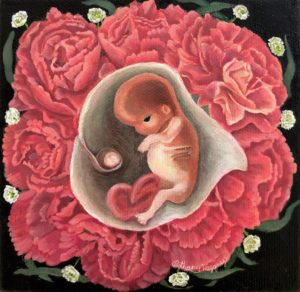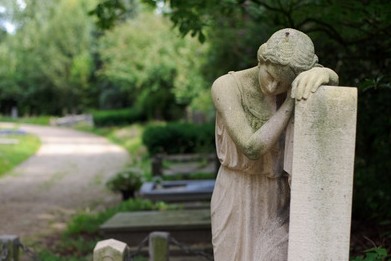If you have found this page, chances are that you have had a miscarriage or are in the midst of one. We are so, so sorry for the loss of your child. It breaks our hearts that anyone would need this information, but we know that in reality, many parents are experiencing this pain every day and have many questions about what the Catholic Church teaches and what to do next. We hope we can help you find some answers.
While many topics on this website are specifically related to Catholicism, non-Catholics are certainly more than welcome to use all of the information presented here. It is not our intent to convert anyone, but to give Catholics a specific place to learn what their Church teaches surrounding miscarried children.
If you have any comments or suggestions for us, we welcome your input! Please use our contact form to let us know what you’re thinking, or even for prayer requests; we will be praying for those of you visiting, and hope that God will bring you comfort and healing in His time.
“You formed my inmost being;
you knit me in my mother’s womb.
I praise you, because I am wonderfully made;
wonderful are your works!
My very self you know.
My bones are not hidden from you.
When I was being made in secret,
fashioned in the depths of the earth,
Your eyes saw me unformed;
in your book all are written down;
my days were shaped, before one came to be.”
Psalm 139:13-16

This beautiful image was given to Catholic Miscarriage Support by its painter, Bethany Pedersen, in the hopes that it would bring encouragement to grieving families.
“Precious Gift” portrays an unborn baby of about 9 weeks, and is based on a photograph by Lennart Nielson, taken after the baby’s life tragically ended by abortion. The placenta is depicted as a combination of carnations and baby breath, and the egg sack is depicted as a white calla lily, with the spadix (central part) of that lily representing the yolk sac. The carnation is a symbol for a mother’s love, based on the early Christian tradition that carnations grew up from the ground in the areas where Mary’s tears fell as she watched her Son’s passion. The calla lily in the center is a traditional symbol of innocence and purity. It has also been considered as a symbol for Saint Joseph because of the story of how his staff grew lilies as a sign that he was God’s chosen to be the husband of the Blessed Virgin Mary. The spadix of the calla lily is reminiscent of the “pearl of great price” that Jesus speaks of in the Gospel. The carnation in the upper-right corner has a highlighted area resembling the shape of a butterfly, which is a traditional symbol for hope in the resurrection.
